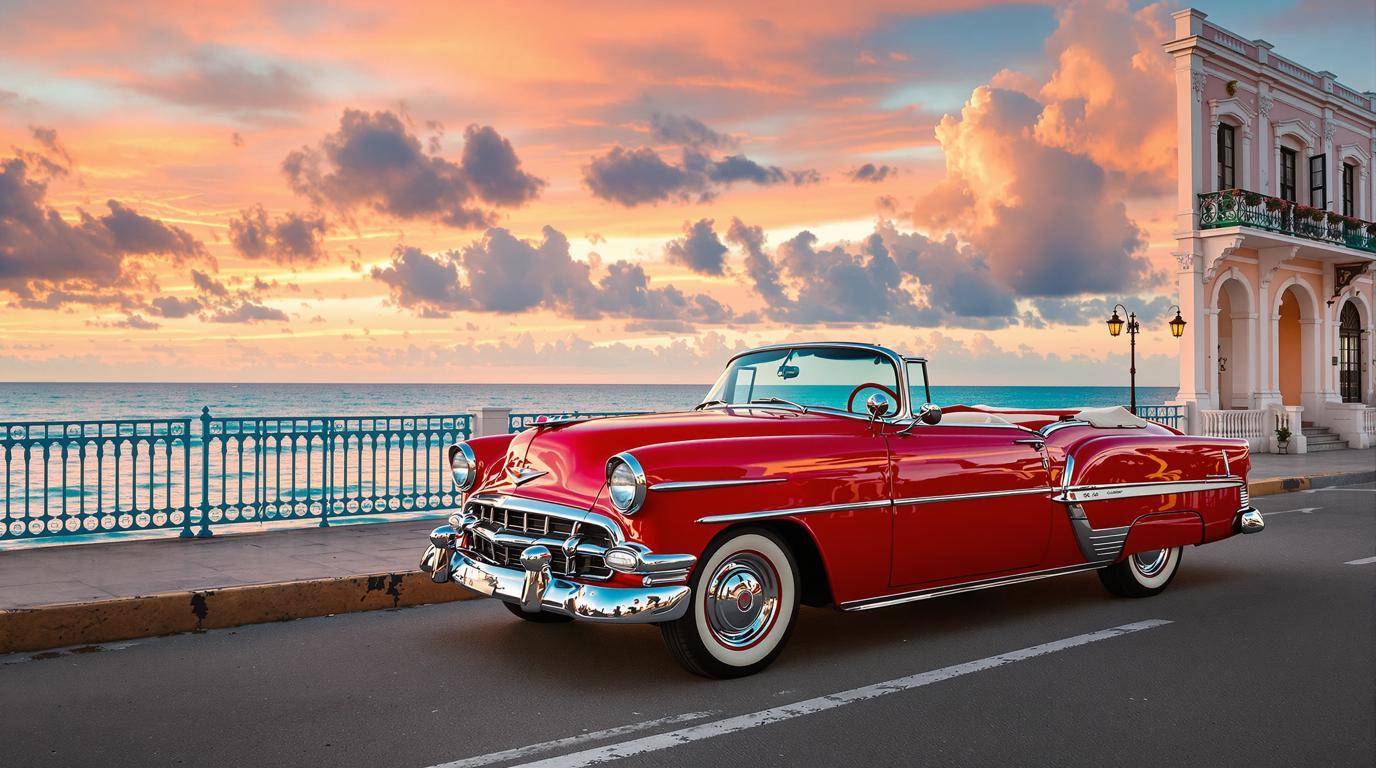The Tiny Island Where Streets Are Full of Classic Cars: Cuba’s Rolling Museum
A colorful time capsule frozen in automotive history
As you step onto the sun-drenched streets of Havana, something extraordinary catches your eye: a parade of candy-colored 1950s American automobiles gliding past crumbling colonial buildings. Cuba isn’t just an island – it’s a living automotive museum where approximately 60,000 pre-1960 American cars still rule the roads, creating one of the most distinctive streetscapes on the planet.
“These aren’t just cars to us,” explains Miguel Sánchez, a third-generation mechanic whose family has maintained the same 1955 Chevy Bel Air for over six decades. “They’re family members with stories. Every spare part has been salvaged, fabricated, or reimagined through pure Cuban ingenuity.”
The accidental preservation of Detroit’s golden age
Cuba’s classic car phenomenon stems from the 1962 U.S. embargo that abruptly halted the import of American vehicles and parts. Necessity became the mother of invention as Cubans transformed into mechanical wizards, keeping these vintage beauties alive through impossibly creative solutions.
Classic Fords, Chevrolets, and Buicks – many sporting vibrant turquoise, cherry red, or sunshine yellow paint jobs – serve as daily transportation rather than garage-kept collectibles. Under their hoods, you’ll find Russian diesel engines, handcrafted parts, and mechanical solutions that would amaze Detroit’s original engineers.
More than transportation: rolling cultural icons
The classic cars of Cuba transcend mere transportation – they represent national identity and resilience. These automotive ambassadors now serve as taxis, wedding vehicles, and mobile tourism attractions, allowing visitors to experience Havana from the backseat of a convertible time machine.
“When foreign visitors ride in my 1957 Chevy convertible, they’re not just seeing Cuba – they’re feeling it, smelling it, hearing it in a way no modern tour could provide,” says Ernesto Gutiérrez, who operates classic car tours in Havana.
The ultimate automotive scavenger hunt
For the automotive enthusiast, Cuba presents an unparalleled treasure hunt. Rare models that have all but disappeared elsewhere still roam Cuban streets. Sharp-eyed visitors might spot unicorns like 1956 Cadillac Eldorados or early 1950s Packards that would command six figures at American auctions.
If you’re seeking adventure among ancient ruins similar to lesser-known Caribbean destinations, Cuba’s automotive landscape provides a completely different kind of historical exploration.
Beyond Havana: classic cars in unexpected places
While Havana boasts the highest concentration of vintage automobiles, smaller towns like Trinidad and Cienfuegos offer more intimate classic car experiences. Here, away from the capital’s tourist routes, you’ll find family heirlooms still serving as primary transportation for multiple generations.
The experience rivals the surreal nature of floating above African wildlife migrations – equally magical but in an entirely different cultural context.
The changing fate of Cuba’s automotive heritage
As diplomatic relations evolve, Cuba’s automotive landscape faces potential transformation. Newer vehicles are slowly appearing, while some classics are being restored to museum-quality with imported parts – much like unfinished European castles finally seeing completion.
Conservationists worry about preserving this unique automotive ecosystem, while pragmatists recognize the environmental and safety advantages of modern vehicles.
Planning your Cuban classic car experience
The best way to experience Cuba’s automotive wonder is through a guided classic car tour. For around $30-50 per hour, you can cruise Havana’s Malecón in a pastel-colored convertible. Photography enthusiasts should visit early morning or during the “golden hour” before sunset when light bathes these chromium beauties.
Unlike the dramatic terrain changes of African mountain expeditions, Cuba’s landscape is relatively flat, making classic car tours comfortable year-round.
The drivers: storytellers behind the wheel
“Every car has survived revolution, crisis, and transformation,” shares Carlos Duarte, whose 1952 Oldsmobile has been in his family for three generations. “We are not just drivers – we are historians preserving stories through these machines.”
The drivers offer fascinating perspectives on Cuban history, often recounting how these vehicles witnessed pivotal moments in their nation’s complex relationship with the United States.
The experience offers the same transformative quality as swimming through ancient thermal wonders – a physical connection to history that transcends typical tourism.
Cuba’s streets aren’t just thoroughfares; they’re living museums where history, necessity, and artistry converge in a symphony of rumbling engines and gleaming chrome – a masterpiece of preservation created not by curatorial intent but by the indomitable spirit of an island frozen in automotive time.
